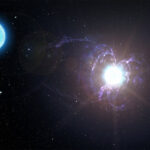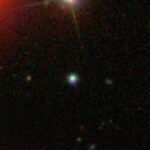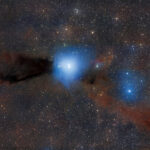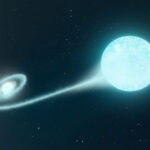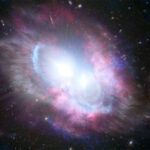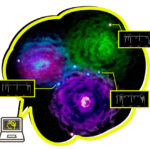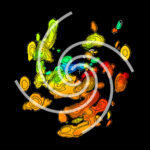Magnetars Origin Story
Far far away, in a constellation called Monoceros, 3000 light years away from us, lives an unusual star known as HD 45166 - preparing to become the most magnetic powerhouse to exist in the known Universe. Magnetars are a type of neutron star that holds the ‘universal’ record of the object with the…
Cosmic Monsters’ Growth Secret
The story of how black holes, especially young ones, grow so fast and become so massive, has been puzzling astronomers for a long time. Enter VERA! – the state-of-the-art Japanese network of radio telescopes operated by NAOJ that recently gifted astronomers with a significant clue to the puzzle. Jets ejected from a…
Tracing Our Stellar Ancestors
A team of astronomers from Japan and China discovered a strange star floating at the edge of our Milky Way galaxy. On a closer look at the star’s chemistry, astronomers think they might have just uncovered a galactic treasure. Could this star be the stellar relative of one of the firstborn stars…
Stranger Things in a Stranger World
On a clear night sky, head out to the backyard with star charts or night sky apps and look up. Can you spot the constellation Pisces? Did you know there is a strange world in the direction of this constellation? Astronomers recently found evidence of stranger things happening on this…
When Baby Stars and Dark Clouds Collide
Did you know the clash of matter and energy can create magical fireworks in the sky? On Earth, one can see this as glowing auroras or powerful lightning strikes beaming across the sky. What happens when such clashes take place in space? The two young, low-mass proto-stars HR 5999 and HR 6000…
Tune in to the Supernova Radio!
For the first time ever, astronomers detected radio waves coming from a Type Ia supernova! And it doesn’t end there: this ‘special radio broadcast’ might carry clues to solve a longtime puzzle - how white dwarfs really explode! Artist’s impression of helium-rich material from a companion star accreting onto a white dwarf.…
Watch out, Earth! A Dying Star Just Ate A Planet
For the first time astronomers found direct clues of a dying sun-like star eating an exoplanet. Using the NSF NOIRLab’s Gemini South Telescope in Chile, researchers observed a long burst coming from the star, low in energy – a telltale sign of a planet swimming along near the star's surface. Artist Impression…
Fast and Furious starring Dual Quasars
Astronomers describe 'cosmic noon' as a dramatic period in the history of our Universe when it was buzzing with galaxy mergers and furious star formation. Observing these mergers has been relatively rare and challenging since the Universe was very young - only three billion years old! Astronomers found evidence of…
AI’s Hunt for the First Stars
Once upon a time, dinosaurs roamed our planet Earth - and even though we never met one, the fossils tell us their story. With the help of artificial intelligence (AI), an international team of astronomers have found the “fossils” of the very first stars in the Universe! They discovered that…
Playing Connect-the-dots Around a Baby Star
Have you ever played connect-the-dots in a magazine? At first, it looks like a mess - but after you figure out how to connect the points, a pattern appears out of the chaos. Recently, astronomers noticed a mysterious spiral pattern hiding around a baby star. But instead of ‘dots’, the…

